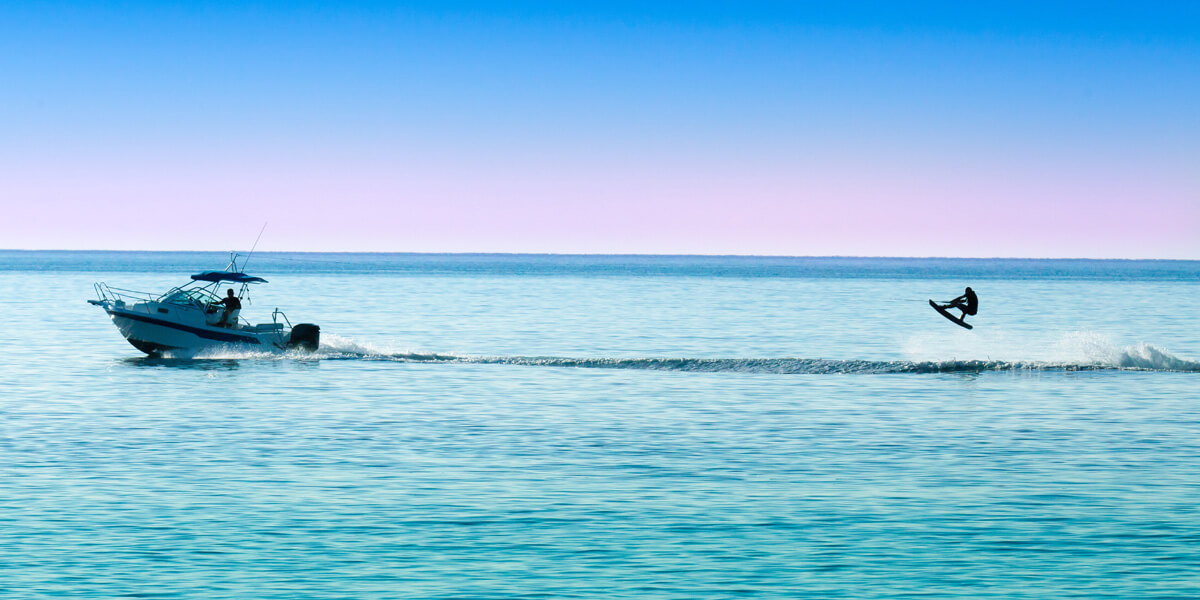What size wakeboard should you buy? Our size chart will help you choose the right board based on your weight, skill level, and riding style.
First of all, you have to choose the board that suits your body type, ability, experience level, and riding style.
Remember that you'll need to book a wakeboarding course in an official school if you're still getting into the sport and learning the basic principles.
Wakeboarding is a thrilling water sport, but you should follow some necessary safety procedures to protect yourself and others.
Make sure you wear a helmet and buoyancy aid/impact vest.
| Rider Weight (lb) | Shorter Wakeboard Size (cm) | Longer Wakeboard Size (cm) |
|---|---|---|
| 25-70 | 111-118 | 118-128 |
| 40-85 | 118-130 | 130-140 |
| 65-110 | 124-134 | 134-144 |
| 70-130 | 130-138 | 138-148 |
| 150-225 | 138-146 | 146-156 |
| 170-250 | 142-146 | 148-156 |
| 200-275 | 146 + | 166 + |
How to Select the Right Wakeboard?
Wakeboards should be chosen according to your experience level.
Riding a beginner wakeboard is different from experiencing an advanced wakeboard.
Never choose a more advanced board than your skill level because you won't be getting up or stay up and riding on that wakeboard.
A 136-centimeter model could be a balanced family board for father, mother, teenagers, and older children, as long as their weight ranges between 100 and 200 lb.
Bigger boards are often a better option for slow speed rides, first-timers, and beginner wakeboarders.
Apart from the graphic side of a wakeboard, wakeboard features two main variables: rocker profile and flexibility.
They will define the way you ride behind a boat or in a cable wake park.
The rocker curve is one of the characteristics that define high-performance wakeboards.
Different wake styles and approaches require different curves, so there is no "right" curve working for everyone.
It's all about what feels right for you.
Buy the right type of wakeboard for your skill level and riding style.
A cable park wakeboard is more durable and has been designed for intermediate and advanced riders.
Skill Level
Wakeboarding is not an easy sport to learn. Beginners need to buy a wakeboard that is easy to ride.
If you are teaching your kids how to wakeboard, start with a beginner's wakeboard with kids' boots.
Wakeboards for beginners are less expensive because they do not have advanced materials and advanced features that advanced riders look for to perform wakeboard tricks.
Beginner wakeboards are larger and built for stability.
For example, long boards with square rails are great for beginners, as they are easy to control; however, it would be difficult to perform tricks with such boards.
For more advanced riders who want to do tricks, lighter, smaller boards offer the greatest flexibility.
Wakeboards with rounded edges are also preferred by advanced riders, as they allow the rider to move faster, jump faster, and land in a much smoother fashion.
Riding Style
People who pick up wakeboarding might be proficient in other water sports such as waterskiing, and some have experience in skateboarding or surfing.
Wakeboards come in single-tip and twin-tip models.
Single-tip boards have a tapered front and a squared rear, which means they can only be ridden in one direction (with the tip facing front).
This type of board is ideal for those with skiing and surfing backgrounds.
Twin-tip boards are generally used by those who love snowboarding and skateboarding because the rider can easily switch the direction of the ride and do tricks.
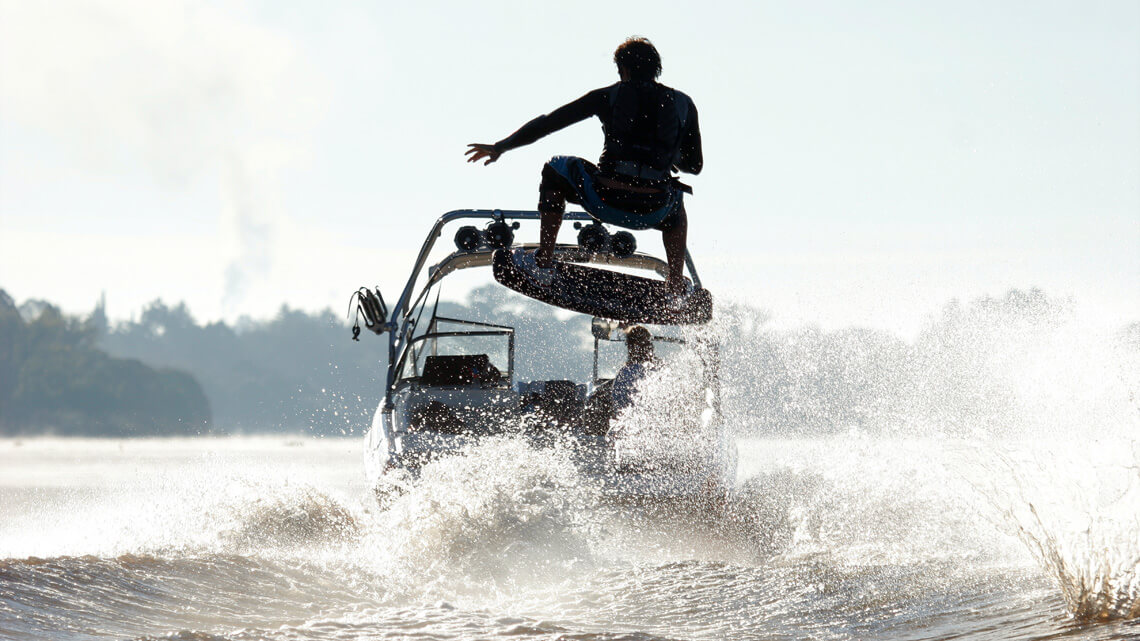
Wakeboard Material
Wakeboard materials need to be light enough to allow the rider to jump and perform tricks, but strong enough, so they don't break after only a few outings.
Foam board and honeycomb are the two main types of materials used to make wakeboards.
Foam boards are best in rough conditions because they are more flexible and ride lower in the water, stabilizing the ride.
On the other hand, honeycomb fiber centers are lighter, faster, and provide more pop.
However, they are also more rigid, making those types of boards hard to control in bumpy conditions.
If you plan to use a wakeboard in a cable park, it must be designed for parks to handle the thrashing on rails without gouging or breaking in half.
Wakeboard Fins
Wakeboards can come with or without fins.
Fins ensure that the board travels in the direction that the board is facing, and they prevent it from spinning out of control.
However, this also means that riders have a harder time lifting off and performing tricks.
Still, some advanced riders will still opt to put fins on their boards, especially in choppy waters.
Wide fins are best suited for beginners, while thinner fins provide stability for advanced riders while at the same time still giving them the ability to execute stunts.
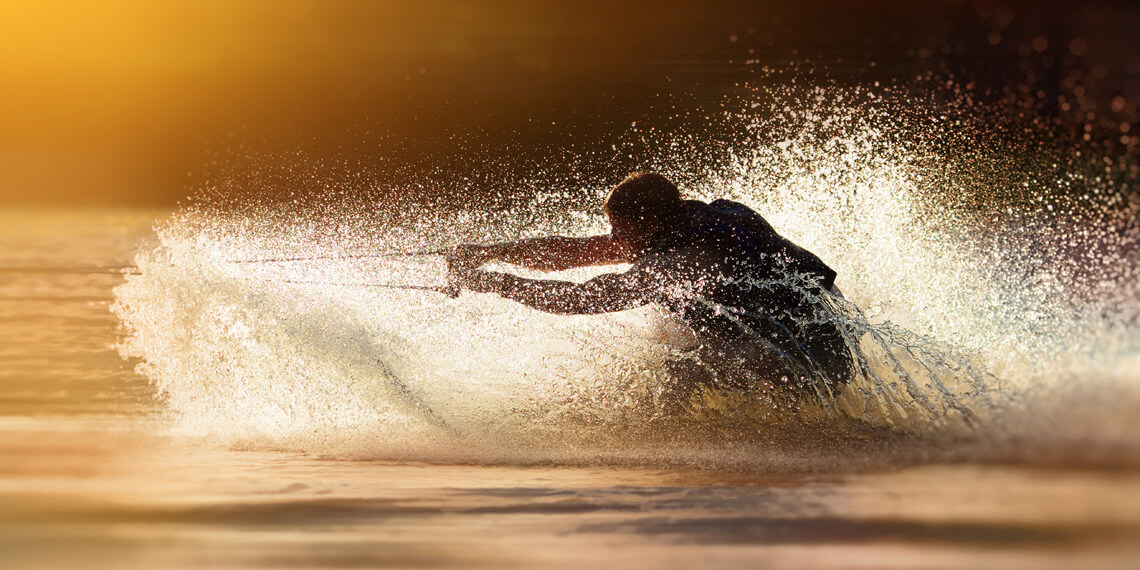
Wakeboard Rockers
The rocker - or rocking curve - refers to the shape of the bottom of the board.
The board's rocker is important because its bottom profile affects the way the board moves and how high it can raise the rider - referred to as "pop" by wakeboarders - depending on certain conditions.
You'll see different boards incorporate varying degrees of these four basic rocker types: continuous, hybrid, three-stage, and five-stage.
Continuous Rocker
Wakeboards with a continuous rocker have a smooth curve with no edge, offering predictable rides and flowing transitions into turns.
These wakeboards offer a faster and smoother ride and can lift the rider over a longer distance, although their pop usually isn't as high.
Three-Stage Rocker
For more pop, riders often choose three-stage rockers.
Wakeboards with these rockers have two breaks in their profiles, creating three planes.
The flat center curve allows for greater control, especially when sliding on rails.
The three-stage rocker profile adds a break in the curve for an aggressive riding style and a flatter center curve for speed and rail control.
However, this shape can disrupt water flow, making boards with three-stage rockers slower.
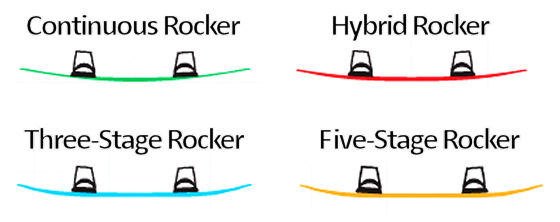
Hybrid Rocker
Hybrid rockers fall somewhere in between continuous and three-stage rockers.
They have a smoother center curve, giving them a more consistent ride while still being able to provide the rider good pop.
The hybrid rocker profile blends two curves together for improved performance.
Five-Stage Rocker
The five-stage rocker profile gives the rider an extra straight-up kick off the wake without the braking effect of a traditional, abrupt three-stage bottom curve.
Flex Wakeboards
Last but not least, you got flex boards built for rail riding in the most creative and complex cable parks.
They were designed so that you won't get the stiffness of a traditional wakeboard when you're hitting the rails.
You want them to adapt to the impact and, therefore, to be more flexible.
Wakeboard Bindings and Boots
After choosing your wakeboard, decide what wakeboard bindings and boots to buy.
Boots and bindings secure the rider to the wakeboard. They're similar to the ones used by snowboarders.
When we talk about a wakeboard boot, it is the same as a binding.
The exception goes to a couple of manufacturers who decided to keep some special wakeboard bindings separate from the boots.
There are a few relevant factors to consider when choosing these critical pieces of equipment: wakeboard year, boot features, boot fit, and boot flexibility.
Wakeboard Year
If you have a newer wakeboard, your boot choices are wide open.
If you have an older wakeboard, have in mind that standards changed in 2013, and you'll need to buy older boots or new boots that are backward compatible, even though they're difficult to find.
If you have older boots, but a newer wakeboard, you may be able to use your older boots on that new board by buying M6 metric bolts.
Boot Features
Different bindings have different features.
Some have closed toes that fit more precisely on a rider's feet and allow the rider to have better control and leverage over their board.
These bindings are also ideal for colder weather, as they can keep the rider's feet warm.
Open toe bindings are less expensive and have a greater heel and toe response.
There are various ways to secure the bindings, such as through laces, mechanical cranks, velcro straps, or hinges.
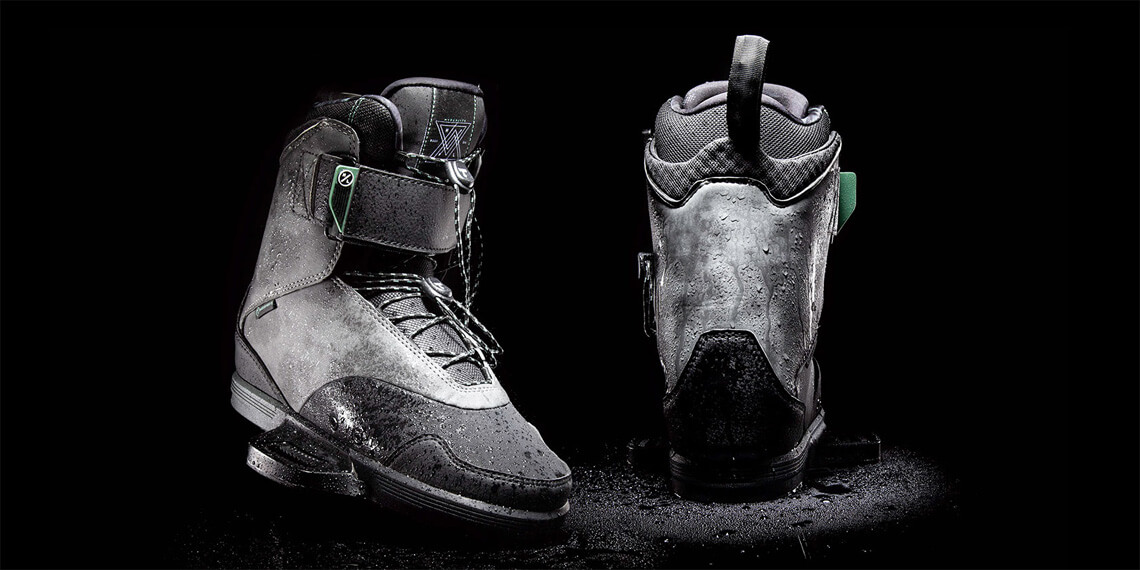
Boot Fit
The fit of the boot must be snug, but not too tight that the rider feels pain or loses circulation.
The right fit will allow for greater control and prevent injuries.
It can take a while to break in new bindings, and there are many binding slime lubricants you can buy to help a rider slip in and out of snug wakeboard boots.
Boot Flexibility
Flexibility is determined by the rider's preference and riding style.
Stiffer boots generally mean higher speed and control, while more pliable ones are better for doing tricks.
Mounting Wakeboard Bindings
Where do I mount my wakeboard bindings?
Wakeboard boots are set at a stance according to your skill level.
Boots that have a left foot different than the right foot must mount depending on having left foot forward or right foot forward.
Additionally, you need to decide on the stance.
